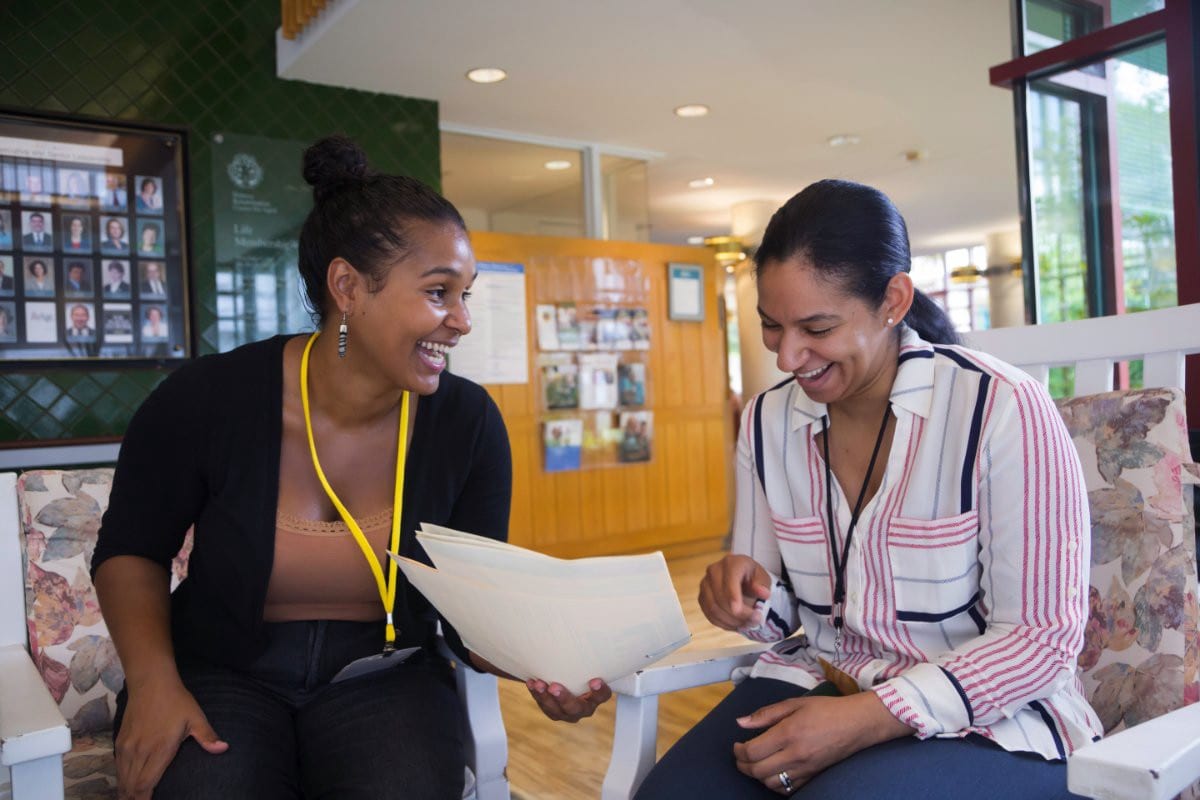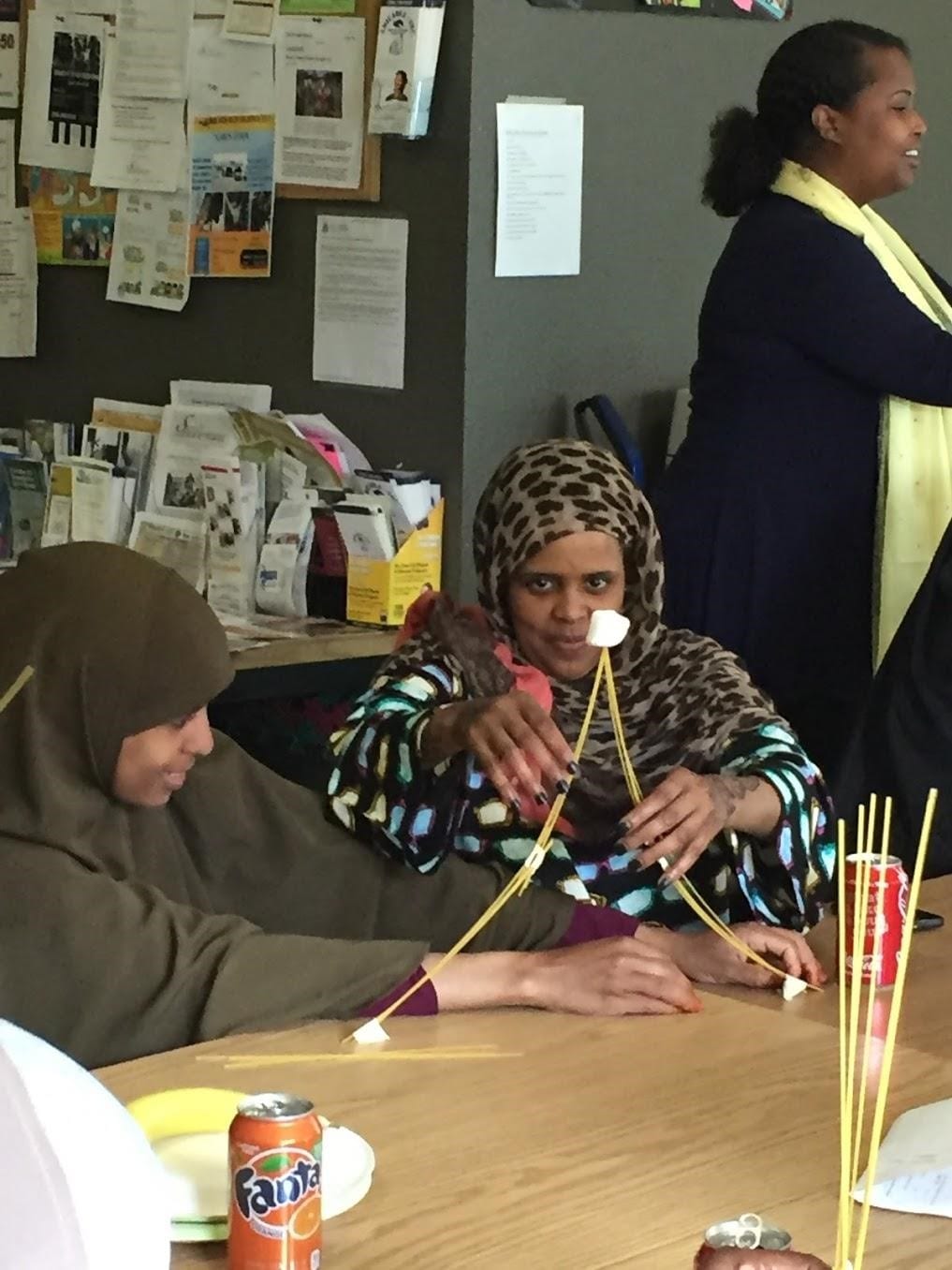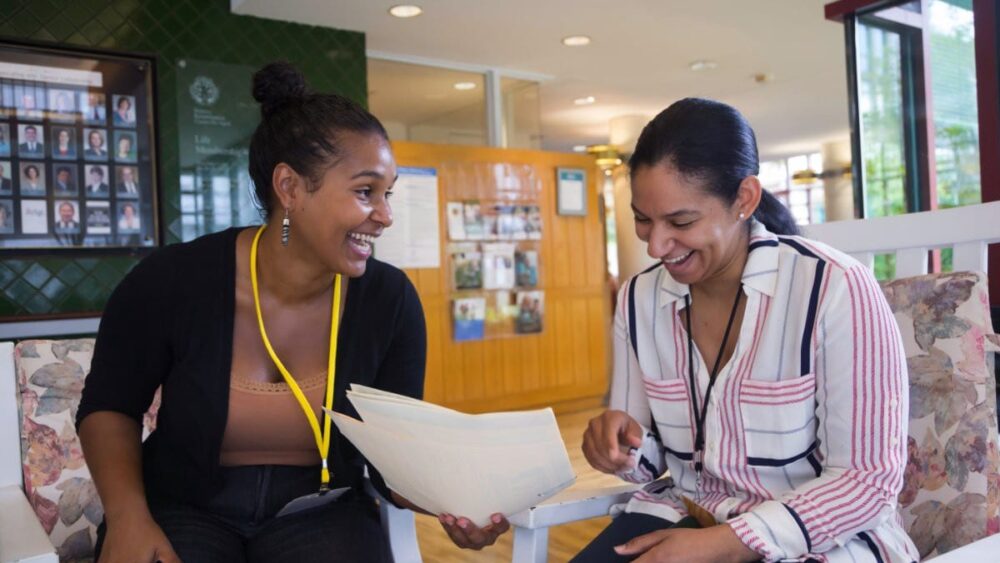By Linda Kekelis, Family Engagement Advisor

EdNavigator
We don’t have the resources to listen to families. We tried but didn’t get much feedback. We don’t see parents of the children served in our programs. We would like to do more, but don’t know how. These are responses we’ve heard from organizations describing their experiences trying to involve families in their program’s design.
STEM programs with the most impact on youth engage families. The programs that most successfully engage families embrace listening to and learning with families. Whether you are launching a new program, developing resources, or revisiting your work with families, we encourage you to make listening a priority.
Five ideas from the field on how listening empowers families and improves STEM programs
Listening can take many different forms. Here are five ideas we’ve learned from STEM programs across diverse communities.
1. In one-on-one conversations parents reveal how they really feel, what they know, and what they need. Drop off and pick up are excellent times to make a personal connection and listen to parents. By welcoming parents and greeting them by name, we can build relationships in which parents feel comfortable sharing their ideas. In one-on-one conversations you might learn about parents’ interests that can help you connect them to additional opportunities in the community. The YMCA reminds us that we need to provide staff with time to be fully present to engage with parents.

Scientific Adventures for Girls
2. Phone calls home can be pleasant and positive surprises for parents. Scientific Adventures for Girls makes phone calls home a priority. On these calls, staff share positive snapshots of their daughters’ engagement in their afterschool program and ideas to support their daughters’ interests. From these calls, the team has gained insights that help them improve their programs for kids and parents. Programs get creative in making calls home to remind parents about upcoming opportunities and ask for input on specific program elements. The YMCA of Anaheim enlists front office staff in making calls while others rely on parents calling parents.
3. In casual conversations among caregivers, parents may feel more comfortable sharing candid input. The Greene Scholars Program taps into these conversations. Parents who serve on committees share what they’ve heard parents talking about in informal conversations and in small groups. This information helps improve the Greene Scholars Program’s curriculum and parent workshops.
4. We can elevate the voices of families with surveys, interviews, and focus groups. These methods can help inform decisions about how to allocate resources that bridge the opportunity gap by attracting and retaining youth and their families who have been underrepresented in STEM. Putting Data to Work for Young People from RAND offers useful strategies to gather data that are accurate, complete, and at the right scale. Include an open-ended question so parents can offer ideas that you might not even have thought to ask about. You might find out like the Lawrence Hall of Science that their families first want to get to know the other families in their programs before jumping into STEM activities.

Techbridge Girls
5. Sometimes we need to listen to families through a partner. A partner who is a trusted member of the community can help broker interactions with families. Techbridge Girls turned to the Somali Youth and Family Club when they wanted to better understand the interests and needs of Somali families. With this partnership Techbridge Girls gained important insights that helped them host workshops for parents that increased their confidence in being STEM advocates for their daughters.
Lessons learned on listening
I hope that these ideas inspire you to try new ways of bringing listening into your programs. As you embark on this work, here are some lessons learned from the field.
Lesson #1 Show why it matters. Explain to caregivers why you want their input and feedback. Put their ideas into practice quickly so that parents see your intentions. Digital Youth Divas heard from caregivers, especially those who had difficulty participating in the program, that childcare was a major hardship for many families’ participation. While Digital Youth Divas hadn’t budgeted for childcare, they accommodated this need, which positively impacted family turnout. If you can’t put all suggestions into practice, explain why to parents.
Lesson #2 Listen for barriers and solutions to barriers. What you presume might not be the solution to a challenge for families. At Techbridge Girls, we heard that transportation was a challenge for participation in our summer programs. However, what we thought was a solution — providing free shuttle service for girls — proved unsuccessful. If I had a do-over, I would have listened to parents for their ideas instead of leaping to solutions.
Lesson #3 Listen to families where they are. Increase opportunities to hear from more families by expanding where you hold your listening sessions. Don’t always ask parents to come to you. Consider holding listening sessions during visits at home, community center, park, cafe, library, or other place where parents are comfortable. EdNavigator really thinks outside the box; its advisors meet parents at work and hear what parents need and want to support their child’s education.
Lesson #4 Commit resources for this work. Michelle Rodriguez, Visitor and Community Experiences Director, at the Lawrence Hall of Science suggests building into grant proposals and program budgets resources to listen to families. This is particularly important when you are moving into new communities with new families. With adequate resources, you can support training and time for staff to listen and learn from families. Partners in Imagine Science-Orange County, California recommend listening to staff for their ideas to help them become better listeners with families.
Interested in learning more? Here are resources to help place listening at the center of your family engagement.
Changing the Game in STEM with Family Engagement. White Paper for Practitioners and Field Leaders to Empower Families in STEM by STEM Next Opportunity Fund. Check out pages 12–17 for practices on listening.
Cultivating a Community of Champions for Children Through Transformative Family Engagement by the W.K. Kellogg Foundation
Engage Every Family by Steven M. Constantino. Check out chapter 6. Check out these downloadable resources.
Human-Centered Design: An Innovative Tool for Professional Learning in Family Engagement by the Global Family Research Project
Listening and Learning with Families handout by STEM Next Opportunity Fund. Try this and give us feedback on our new resource.
Linda Kekelis, PhD, is an advisor for STEM Next Opportunity and founder and former CEO of Techbridge Girls. Family engagement has been a passion for Linda and at the center of the research and programs she has led.
Email: lkekelis@gmail.com Twitter: @LindaKekelis
The post Listening: The “Secret Sauce” for Impactful Family Engagement appeared first on STEM Next.

Comments are closed.